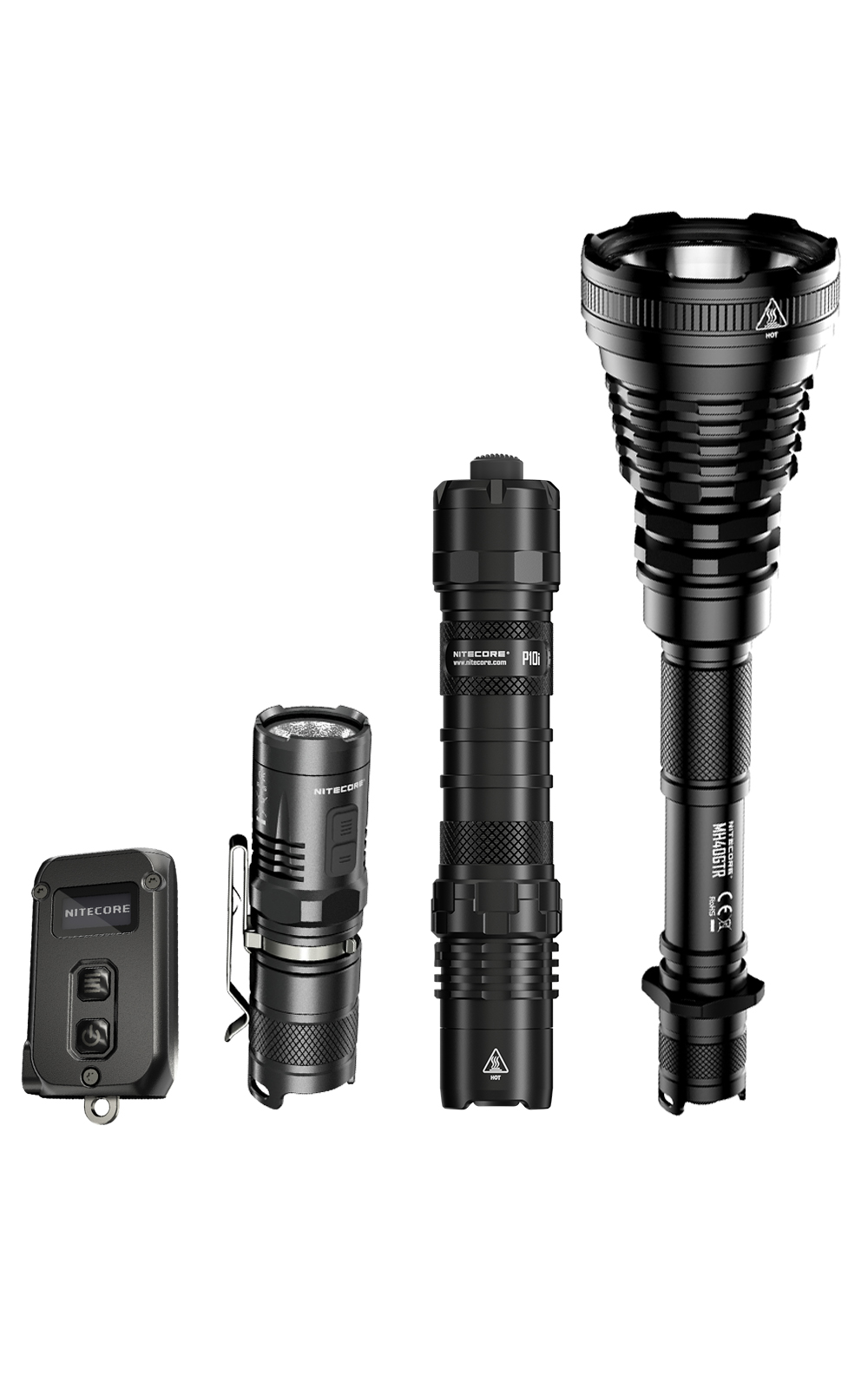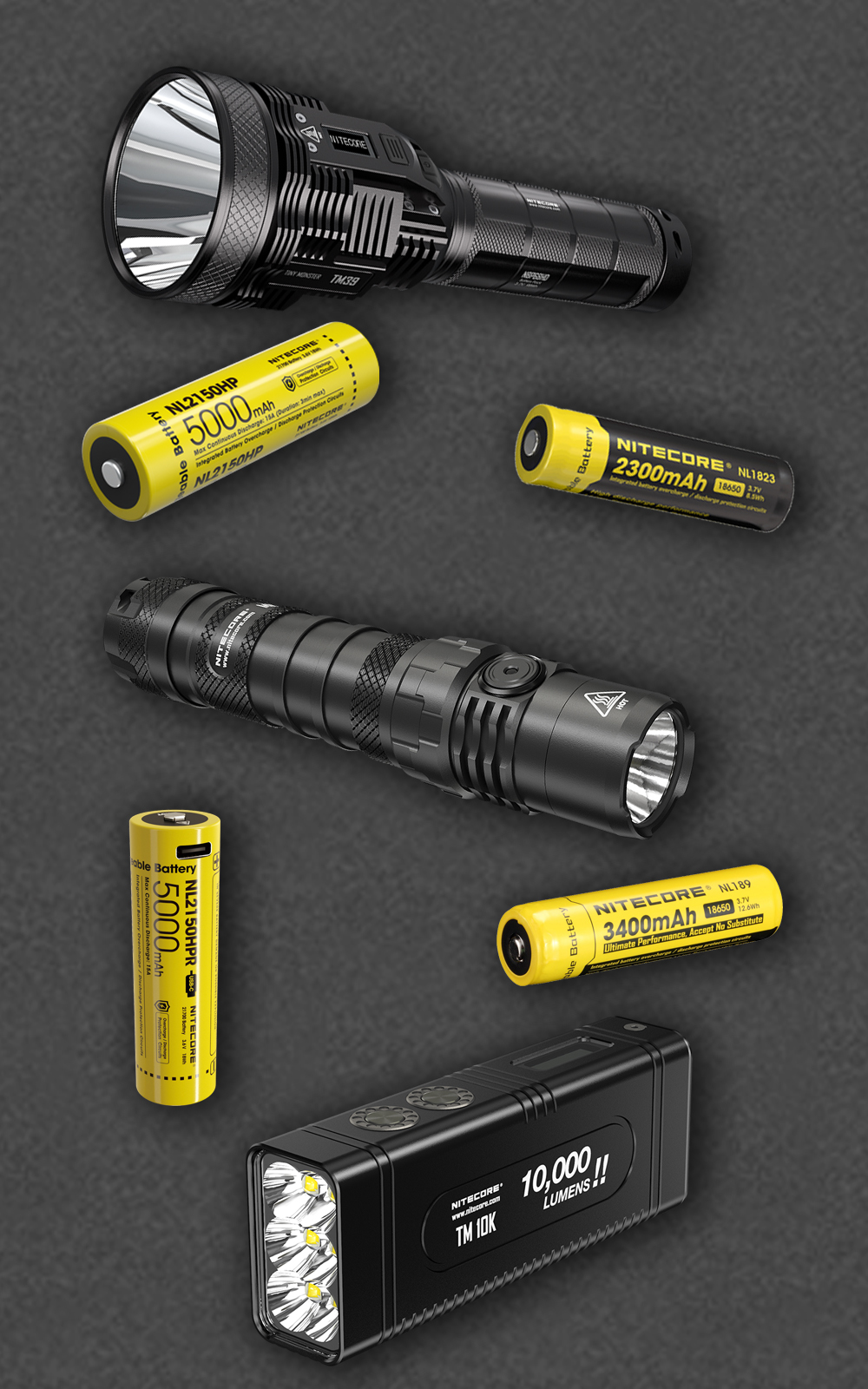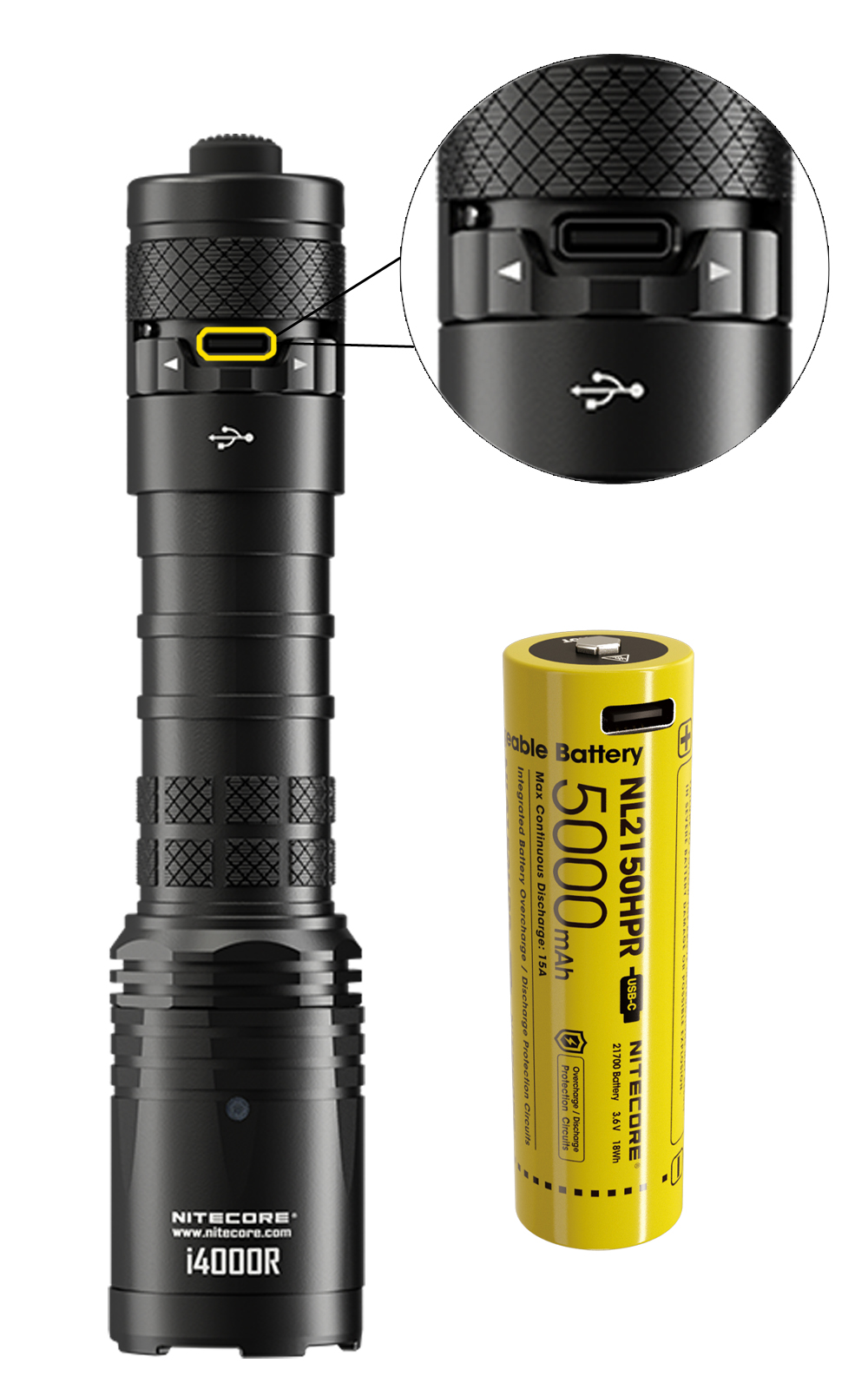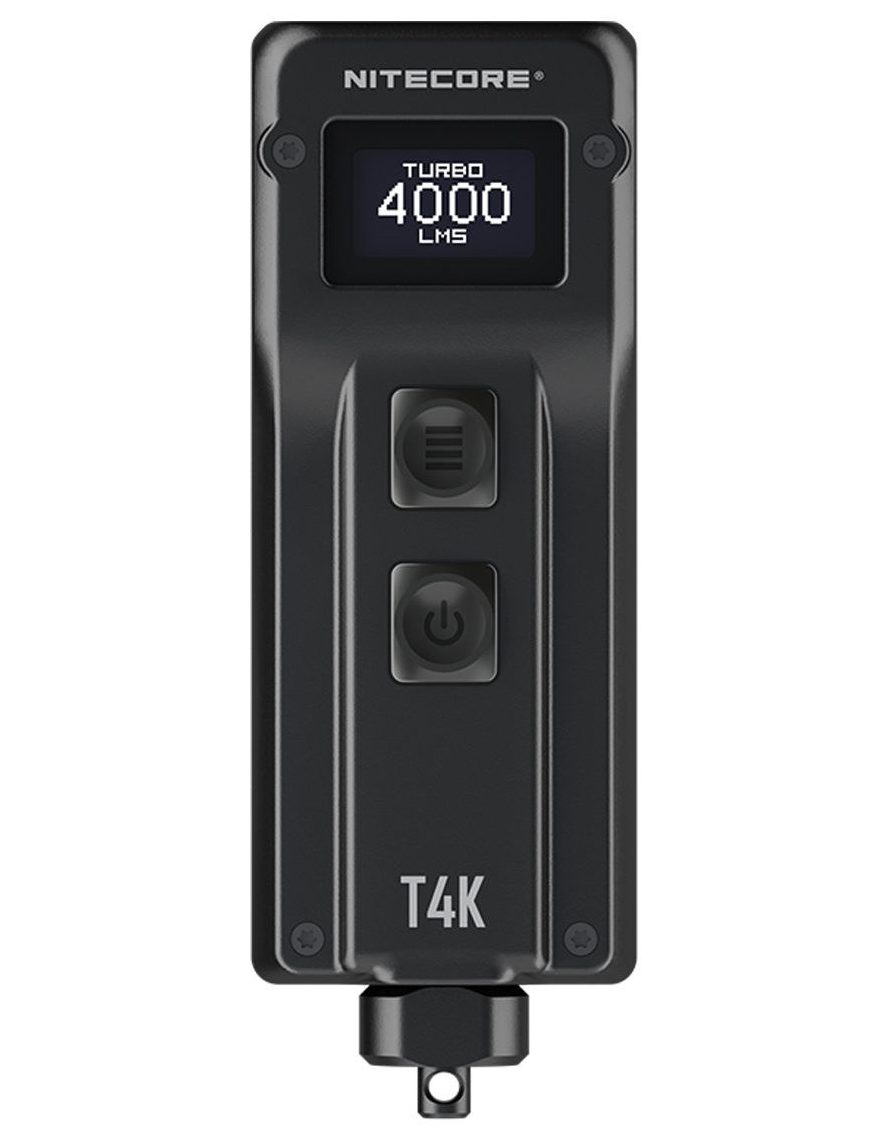Key Takeaways
- Choose the brightness that suits your situation.
- Rechargeable flashlights have both built-in and removable batteries.
- Micro-USB & USB-C charging ports are more common and a safer bet.
- The size of the flashlight matters & is dependent on its use.
- Some rechargeable flashlights have different display features, determine whats necessary.
1. How Bright Do You Need It To Be?
This is usually a key feature when deciding to purchase any flashlight. Of course, everyone wants the brightest there is, but it’s important to consider what you plan to use it for and how many lumens you actually need.
If you’re using it for everyday carry such as going for a walk, run, maybe even hiking, or just needing a flashlight to use when you lose something under your car seat, then a sub-1000 lumen rechargeable flashlight will work just fine. Now if you’re needing a rechargeable flashlight for hunting, law enforcement, or tactical reasons, then above 1000 lumens will serve you well.


2. Flashlight Size
Ah yes, size does indeed matter when it comes to rechargeable flashlights. Of course, it really does depend on what you’re using it for, but everyone is trying to stuff as much power into the smallest frame as possible. If you plan to use it as just an everyday carry for many small tasks, then a keychain flashlight or a smaller EDC flashlight would be sufficient.
But, if you plan to use it as a work light, or for hunting or the likes, then maybe a larger more powerful flashlight would be the direction you want to go. There are so many different sizes of rechargeable flashlights and they vary largely but keeping in mind all of these different features you will get a feel of which one is best for you.
3. Batteries
Built-in vs Removable
Does it have a built-in rechargeable battery or removable rechargeable batteries? Both have their pros and cons. With removable batteries, you can easily swap batteries in your flashlight if one does and you don’t have the time or resources to charge it at the moment. So being able to pack multiple batteries decreases the need of having to plug your flashlight into a power source to charge it.
On the other hand, having a built-in battery means having everything you need in one place. Meaning you don’t have to worry about potentially carrying spare batteries. It keeps your packing light by minimizing the extra luggage. Nor do you have to worry about misplacing your batteries and having to search for new compatible ones. So it depends on your situation along with your preference to decide which battery type is for you.

Battery Types it Supports
Another factor for batteries is size. This is mainly one that applies to rechargeable flashlights with removable batteries. The two main battery sizes in rechargeable LED flashlights are 18650 and 21700 batteries. The 21700s are more energy-dense but they are also slightly larger and heavier. Flashlights that are built for 18650s can also fit 2 CR123A batteries but will not be able to fit 21700s due to size.
Likewise, a flashlight built for 21700s will not be able to fit a 18650 battery unless you use a battery magazine to help it fit. So choosing a 18650 rechargeable flashlight means you can only use 18650 batteries and CR123As. A 21700 flashlight offers you more options for batteries to use but add a little more weight and another item to keep up with.

4. The Charging Port
USB-C & Micro-USB, A Safer Option
USB-C and micro-USB charging ports are a safer bet. The reason is, these two charging ports are extremely common and many other electronic devices use them. Micro-USB use to be the go-to and now USB-C is the current standard for most new devices. This means you probably have multiple charging chords with these ports laying around your house. Or, if you lose yours it is easy to replace at your nearest retail store.
So due to their popularity and being so common, USB-C and micro-USB charging ports are objectively a safer way to go. Of course, it depends on your preference and situation. If you aren’t using your flashlight so often to where it doesn’t need to be changed daily or every other day then keeping up with a specific flashlight charger could be considered manageable for you.
Beware of Magnetic/Proprietary Charging
The charging port on the flashlight is more important than what many people might think. Some people like magnetic charging clips because they are easy to use and do not require you to correctly plug in your flashlight.
The downfall of magnetic clips or other proprietary charging ports is that flashlight companies make their own unique port. This means that the only way you can charge your flashlight is by using that specific charger manufactured by the company. This becomes a problem if you lose your charger or your flashlight dies and you are away from your charger. Because these chargers are so unique, the chances of someone else having one laying around or on their person is slim to none. This doesn't mean one is definitely and objectively better than the other, it is another factor to heavily consider.
5. Does It Have Display Features?
Some rechargeable flashlights now come with LED screens to display things such as battery percentage, voltage, and output. Other rechargeable flashlights have only a light that will flash to either show the battery percentage or voltage of the battery. The LED screen is a nice addition but is not necessary for everyone and not everyone would make the most use of it.
So considering how important it is to have such a display is key when choosing between rechargeable flashlights. Nonetheless, having at least some sort of display showing battery percentage/voltage remaining is pretty important to have when using rechargeable flashlights.

Rechargeable Flashlights from Nitecore
Nitecore has a wide range and an excellent selection of rechargeable flashlights. Take a look for yourself!

